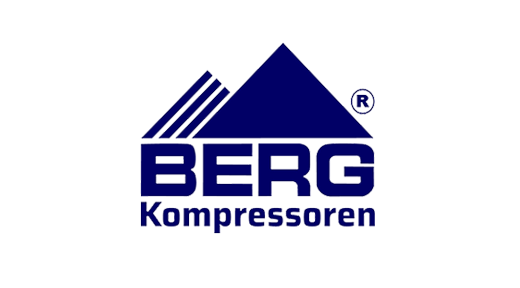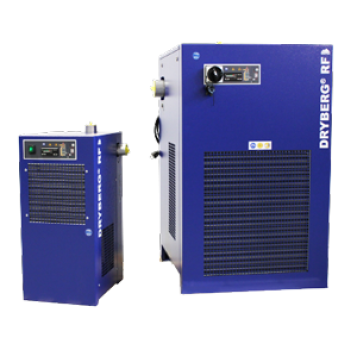Product information "DRYBERG®️ RF19/AC Refrigeration dryer "
Refrigeration dryer DRYBERG®️ RF19/AC equals to DRYPOINT®️ RA1080/AC
Operating pressures multiply air flow with correction factor f1
Ambient air temperatures multiply air flow with correction factor f2
Compressed air inlet temperatures multiply air flow with correction factor f3
Downloads
Technical Data DRYBERG®️ RF19/AC Refrigeration dryer, PDF( Size: 450 KB )
Manual DRYBERG®️ RF/AC, PDF( Size: 5 MB )
Function description
Operating principle – All dryer models described in this manual function according to the same principle. The hot and moisture-loaded air is led into an air/air heat exchanger. Afterwards, the air flows through an evaporator, which is also known as an air/refrigerant heat exchanger. The air temperature is reduced to approximately 2°C, so that water vapour condenses to liquid. The continuously accumulating condensate is collected in the separator to be discharged via the condensate drain. Subsequently, the cold and dry air is led through the air/air heat exchanger, so that it is reheated to up to 8°C below the inlet temperature when leaving the dryer.
Refrigeration cycle – The refrigerant is conducted through the compressor and reaches a condenser under high pressure. There, cooling-down takes place, making the refrigerant condense to a liquid state which is under high pressure. The liquid is pressed through a capillary tube where the resulting pressure drop ensures that the refrigerant evaporates at a defined temperature. The liquid refrigerant which is under low pressure is led into the heat exchanger, where it expands. The cold resulting from the expansion serves to cool down the compressed air in the heat exchanger. During this process, the refrigerant evaporates. The low-pressure gas is resupplied to the compressor, where it is compressed again. It then re-enters the cycle. In phases of a reduced compressed-air load, the excess refrigerant is resupplied automatically to the compressor via the hot gas bypass valve.
Refrigeration cycle – The refrigerant is conducted through the compressor and reaches a condenser under high pressure. There, cooling-down takes place, making the refrigerant condense to a liquid state which is under high pressure. The liquid is pressed through a capillary tube where the resulting pressure drop ensures that the refrigerant evaporates at a defined temperature. The liquid refrigerant which is under low pressure is led into the heat exchanger, where it expands. The cold resulting from the expansion serves to cool down the compressed air in the heat exchanger. During this process, the refrigerant evaporates. The low-pressure gas is resupplied to the compressor, where it is compressed again. It then re-enters the cycle. In phases of a reduced compressed-air load, the excess refrigerant is resupplied automatically to the compressor via the hot gas bypass valve.
Technical Data of Refrigeration dryer DRYBERG® RF19/AC
| Refrigeration dryer | DRYBERG®️ RF19/AC |
| Volume flow (m3/h) at +3 °C | 1140 |
| Power consumption (kW) | 2,10 |
| Pressure loss (Δp bar [g]) | 0,21 |
| Air connection (ø) | G 2 1/2" BSP-F |
| Dimensions AxBxC (mm) | 1100x645x920 |
| Weight (kg) | 170 |
Operating pressures multiply air flow with correction factor f1
| bar (g) | 4 | 5 | 6 | 7 | 8 | 10 | 12 | 14 |
| f1 | 0.77 | 0.86 | 0.93 | 1.00 | 1.05 | 1.14 | 1.21 | 1.27 |
Ambient air temperatures multiply air flow with correction factor f2
| °C | 25 | 30 | 35 | 40 | 45 |
| f2 | 1.00 | 0.95 | 0.88 | 0.79 | 0.68 |
Compressed air inlet temperatures multiply air flow with correction factor f3
| °C | 25 | 30 | 35 | 40 | 45 | 50 | 55 |
| f3 | 1.20 | 1.11 | 1.00 | 0.81 | 0.67 | 0.55 | 0.45 |
Downloads
Technical Data DRYBERG®️ RF19/AC Refrigeration dryer, PDF( Size: 450 KB )
Manual DRYBERG®️ RF/AC, PDF( Size: 5 MB )
Login


